Why I pretended my dyslexia wasn’t a big deal - my experiences as a dyslexic teacher.

Written by Catrina Lowri
Catrina Lowri is the founder of Neuroteachers and a neurodivergent teacher, trainer, and coach. As well as having 22 years’ experience of working in education, she also speaks as a dyslexic and bipolar woman, who had her own unique journey through the education system.
When I had already been teaching for about 10 years, I met a pair of grandparents at a friend’s barbecue. They had just received some devastating news; their 9-year-old grandson had been diagnosed with dyslexia.
They told me this in hushed voices, as if they were ashamed.
Although, their reaction was not unusual (97% of respondents in one survey viewed dyslexia negatively *), I was taken aback. Did this mean I should be ashamed or devastated about my own neurodivergence?
I did my best to reassure the couple that their grandson would be fine. I told them lots of successful people, like Richard Branson and Tom Cruise are dyslexic. Although he might need extra support, their grandson could get GCSEs and A levels if he wanted. They seemed reassured. Then I told them I was a dyslexic teacher.
Their reaction astounded me even more than the shamed hush had done previously. They were over the moon at my success! The grandfather toasted my talents, and the grandmother gave me a hug. They both treated me like I had just climbed Mount Everest. I couldn’t fathom why.
Until that point, I had never considered my achievements anything special. Yes, I’m a dyslexic teacher who went on to gain a master’s degree but was that out of the ordinary? I knew no other dyslexic teachers, but they must exist. I’ve always disliked it when people say I’ve ‘overcome’ my dyslexia. I haven’t. I’m still as dyslexic as I was the day I was born ( it’s genetic). I’ve just found ways around it. Most of which involve the use of technology.
I used to downplay my attainment in a matter-of-fact fashion. I disliked people who made ‘ a big deal’ of their dyslexia. My dyslexic friend, and I used to joke that we would write a book called ‘So you’re dyslexic? Just live with it!” As if all you had to do was keep calm and carry on.
I have talked before about my experiences at teacher training, where another student commented that he believed dyslexia was a middle class camouflage of a lack of intelligence. That must have stuck because, up until my chance meeting with these grandparents, I had just shrugged off my neurodiversity (ND) and downplayed my success.
After meeting my fellow barbeque guests, however, I changed my attitude. No, it hasn’t been easy to forge my career, firstly as a schoolteacher and now as a private specialist teacher and trainer. Yes, I do find several aspects of the job harder because of my ND. And yes, I am proud of my achievements.
I’m now 23rd years into my career, I’ve met hundreds of colleagues, yet I know very few ND teachers and even fewer dyslexic ones. My next step is to try and find us all support and recognition so that we can be good role models to ND children. And perhaps inspire the next generation of ND educators.
Reference Dr Kate Griggs ‘ The Creative Brilliance of Dyslexia’ https://www.ted.com/talks/kate_griggs_the_creative_brilliance_of_dyslexia
Two Years On: Where are we now?
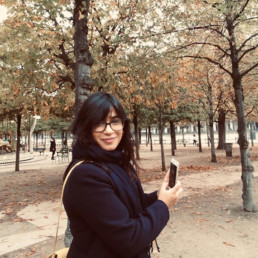
Written by Hana Malik
Hana Malik is currently an Associate Senior Leader, Head of English with a passion for social justice, diversity and equity.
We decided, after the murder of George Floyd in the US, that we wanted our educational organisation to join the movement against racism and we turned our school towards the necessary work it took to be anti-racist. Now, two years on, I find myself asking where we are and what we’ve achieved, if we’ve made any positive changes to the lives of our staff and students and if our DEI work has moved us forward.
We have heard it before, and it is key to achieving success: DEI work is circular – it is evolving and the work is never ‘done’. It is vital therefore to reflect on progress and ensure the evolutions keep happening.
Ella Washington, an organisational psychologist and founder and CEO of Elevate Solutions (a DEI strategy firm), helps to clarify the ‘five stages of DEI maturity’ and how we might evaluate the work we are doing. The five stages are: aware, compliant, tactical, integrated and sustainable. She explains this in her upcoming book as well as for the Harvard Business Review: https://hbr.org/2022/11/the-five-stages-of-dei-maturity She has also spoken about the three Ps of DEI evaluation.
Purpose
The most important place to begin is with the why, especially because there is (not yet anyway) no standard of DEI in an educational setting against which you can measure your organisation. No teacher standards (although meeting the needs of learners is often cited as DEI adjacent) and certainly no Ofsted criteria under Quality of Education or Personal Development. I consider our school and think about where we were in 2020. Why did we join the movement? Did everyone know where we were going and why we were going there? Did everyone feel safe in joining the journey?
There were great successes in this area, especially in 2020 and 2021. Now however I must admit that our commitment to DEI has become something of an ‘extra’ improvement priority. Not because we don’t believe in DEI, but because, like all schools, the reality of exams, Ofsted, sky-high bills, mean that we are juggling countless balls and it has been hard to hold on firmly to the DEI one. Most important perhaps is the question of whether our why has changed and if as leaders we can be courageous enough to acknowledge that and realign the vision.
Pitfalls
This can be difficult, but honest reflections and consideration of barriers and pitfalls will contribute to successful and sustained DEI work. Were leaders vulnerable and open about why we’d started this journey thereafter building confidence and trust in the staff body? Did staff have a secure and shared language about DEI? Were changes manageable and sustained?
We’ve fallen into some predictable pitfalls. The one that is arguably most challenging is that we have stopped communicating our vision and goals for DEI. Is it still on our school improvement plan? Yes. Do we all know why it’s there and what change might entail? No. Secondly, the work of DEI cannot fall to one person. A DEI champion is great, but what happens when they leave? We know how important middle leaders are in delivering change, and it is in that room we can ensure that DEI is sustained.
Progress
The all-important ‘this is progress’ stage. The curriculum, the outcomes, the senior leadership team. We want to see progress across all elements of our organisation. So, what does progress look like? What does it look like in the short term and the long term? How can we find out where we are now and where we need to go next?
We do have a more diverse and representative SLT. We do have a more inclusive recruitment process from blind CVs to diverse panels. Our students do learn about a wide range of topics; from kabaddi in PE to reframing migration. There are boxes we can tick now, that is true. But we know our work is far from ‘done’. We will need to return to the question of what progress looks like for us and go from there. If schools are microcosms of the society we live in, we need to think carefully about what DEI in a socially just and equitable world looks like. We can then build the change we want to see.
Tidying up: a lesson in values from the Japanese football fans

Written by Esther Cummins
Course Leader MA Education (online) at Falmouth University
Every four years, the World Cup offers schools a theme around which to focus their learning. The links to geography and sport are obvious, but further learning opportunities include the application of probability, time zones, languages, and textiles. Unexpectedly, this year we have all been shown an example of community values from the Japanese fans and players.
The pictures and videos that have circulated of spotless dressing rooms and tidy stadiums show the communal value of respecting your hosts held by the Japanese visitors. This representation of fans and players is a far cry from the embarrassing behaviour that is often seen in media reports about English fans. So why is there such a difference in the behaviour?
Interviews with Japanese fans have commonly cited the term, “atarimae”; the English translation is similar to ‘obvious’ or reasonable. From a young age, children take on the responsibility of cleaning their schools before they leave for the day. This task is not an ‘add-on’ to be squeezed into the curriculum if there is time. It is not a quick tidy-up or asking the students to put their chairs on the table. Without this cleaning, the school would be dirty.
I have cleaned schools out of necessity; in a small school where I was a senior leader, the headteacher and I were the contingency plan when the cleaner was absent. I have asked children to wash some toys at the end of a school term. I have asked university students to put their rubbish in the bin. But I have not worked in an environment where it was a regular expectation for the educators or the students to maintain the tidiness and cleanliness of the learning environment.
Within our society, we pay cleaners and caretakers less than we pay our educators. Perhaps this mentality is a hangover from the British Empire, where the wealthy expected their servants to clean up after them. Our values impact our behaviour (Steg et al., 2014), thus it is important to consider what and who we value. When we litter or leave a mess, we are saying we are more important than the environment or those that are paid to clean. Is this who we want to be as educators, and as a nation?
Respect is part of who we are; indeed, “The teaching of respect for others is not only one of education’s more important objectives, but in its absence little, if any, real learning can take place” (Ungoed-Thomas, 1996, p152). If we are viewing our pupils as the citizens of the future, we need to think carefully about the values we are instilling in their lives. Saying we are respectful is different to being respectful; we need to model and insist upon behaviour that mirrors this value.
This issue is about more than tidying up. It can be applied to any of our inclusive values, our desire for equality, and our drive for fairness. If atarimae means stating the obvious, which behaviours and values do we need to instil in our classrooms, from nursery to university, that creates a respectful community we are proud of?
We are yet to see who takes home the trophy, but I know whom I see as the winners of this year’s tournament.
When Does Identity Matter?
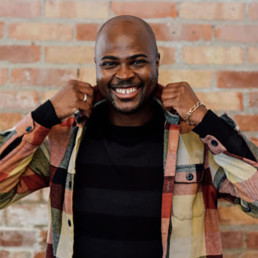
Written by Mahlon Evans-Sinclair
Mahlon Evans-Sinclair is an experienced educator with extensive participation in the fields of learning, professional & personal development, and EDI (Equity, Diversity and Inclusion).
A good rule of thumb is being able to articulate its relevance to yourself.
I often read many stories/recollections that involve identity markers as a descriptor.
I’ve reasoned with the many manifestations of how people use them and figure that whatever the expression, the main reason is to draw attention to something that seemingly has relevance to the story… but does it always…
A former colleague would often tell stories and when an identity descriptor would come up, they would often pause and say ‘and (e.g. race) is relevant to the story here because’… At first it would take me out of the story as I would wonder what the point of drawing attention to it was for, but the more I heard it being said, the more I felt comfortable and more understanding of its intention – It was a signifier for both the storyteller and the audience that the inclusion of this marker was intentional and why.
In thinking about how we use markers in education, sometimes we implicitly state things and expect that others instinctively know what we mean, or we (un)intentionally ‘add weight’ to the meaning of our stories by throwing in unexplained identity markers as though they are adjectives.
Consider for example that one of the students in a class has a learning difference that needs to be taken into account. It makes sense to say, ‘and this status matters here because (it will help with your planning/seating arrangements/conversations with them and their family)’. Consider that the same student happens to be the only non-white student in the class. Would stating that there’s a ‘Black kid with dyslexia’ in the class be helpful in the same way?
It’d be useful to think about what you’re actually intending to state.
– Is the race as important as the learning difference?
– Do the race and the learning difference compound?
– Are there no other ways of describing the student?
You could say that this would be simply solved by knowing and using the student’s name – yes(!) – however, we don’t always do this, especially when retelling a story to an audience who may not have the same level of connection to the subject matter.
So, consider when telling a story that involves an identity marker (such as race, gender, age, sexual orientation, physical or mental difference, etc), add in a clarifier of ‘their identity matters here because…’ and see if it actually does.
Diverse Educators: A Manifesto - Book Review
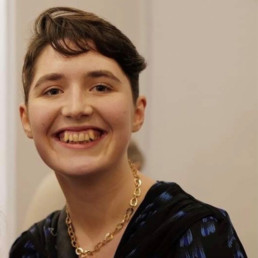
Written by Madeleine Spink
Madeleine completed a PGCE in Citizenship at the IOE after studying at the University of York and Goldsmiths. Madeleine now teaches Sociology, PSHCE, Oracy and History at Langley Park School for Girls in Bromley.
Diverse Educators: A Manifesto is edited by Hannah Wilson and Bennie Kara, with contributions from over 100 educators, structured around the Equality Act 2010.
It starts with a quote from Maya Angelou that “diversity makes for a rich tapestry, and we must understand that all the threads of the tapestry are equal in value no matter what their color.” The books format is best described as a tapestry. It is made up of ten chapters, one for each of the nine Protected Characteristics (Age; Disability; Gender Reassignment; Pregnancy and Maternity; Marriage and Civil Partnership; Race; Religion and Belief; Sex; Sexual Orientation) with a tenth chapter exploring intersectionality.
The book is collaboratively produced and mixes personal and professional experiences. Educators generously sharing their experiences and learning include primary and secondary teachers from all age groups, backgrounds and life experiences. The book develops the readers empathy to the diversity of educators, as well as the diversity of opinion of people within each protected characteristic. For example, the chapter on disability includes personal experience, the need for disability in RSE, practical tips to involve students in curriculum planning and data on the permanent exclusion rates for disabled students. It feature’s ACT’s own Lee Jerome on Intersectional Citizenship as a status, a feeling and a process. The chapter on Transgender inclusion is also insightful and talks about Lucy Meadows, whose death should not be forgotten by teachers who have followed her into the profession.
Deep questions are asked throughout, and the contributions informed my thinking about whose responsibility inclusion is, whose work it often ends up being and whether inclusion work is for the long term or ‘en vogue’. I would have loved to have seen a chapter talking about working class teachers existing in the middle class school environment, and how this identity intersects with the protected characteristics.
The variety of editing and writing styles did make the manifesto lack cohesion and feel inaccessible at times. The structure takes time to get used to, and can be navigated either by starting with the editors overview and selecting the sections that appeal to a particular interest, or by focussing on the key takeaways and ‘contributions’ to the manifesto at the end of each chapter. This changes depending on how the chapter has been edited, and some chapters are referenced while others lack referencing. It is a tapestry of a book, to capture such a variety of perspectives is a huge achievement, but not everything will appeal to everyone.
Diverse Educators is a book to dip in to, reference and use as a guide to practical steps that can be taken to inclusion. It would be a good choice for a staff book group and comes with a reading guide and questions. There’s a lot of ways this resource can be used and shape teaching, learning and the school environment.
Being the teacher that I never had...

Written by Craig Weir
LGBTQ+ Educator, Consultant and Safeguarding Lead
People often ask why I became a teacher. The answer – to be the teacher that I never had.
My own secondary school experience was tough. I lived in a small town off the west coast of Scotland where social status was defined mostly by what football team you supported: Rangers or Celtic. My lack of interest in either team made me an outcast to the boys in P.E, leading to me being picked last for all sports and seen as less alpha. It was obvious that the boys quickly assumed that I was strange because I didn’t see football as the most important thing at that point. It wasn’t that I wasn’t interested or good at sports; the assumption was that I was different because I couldn’t participate in the locker room “banter”.
This was the start of the multiple years of being bullied for being a “fag”, “gay boy”, “poof” or “bender”. These words were hammered into me daily from what felt like many and most of the boys. Instead of reporting this, I decided to hide my upset for the fear of looking weak and upsetting my family. It was, in fact, my cousin who spoke up when they witnessed the unkindness of their own friends towards me. When my mother finally asked the school to step in and help, they really could not and did not do much. The school were confined by the section 28 legislation that banned the promotion of homosexuality; I still struggle with this now. Unfortunately, the school did not act with speed or strength, which led me to absorb similar abuse throughout most of my school years. In all honesty, I think I’d struggle to write how I really felt at this time. In fact, this is a time that I have lost as it feels better to have “forgotten” what really happened. What I do know is it does – and did – get better.
On leaving school, I trained in musical theatre at a very famous drama school in central London. The fact that I was moving hundreds of miles away from the pain was comforting. I was a real-life Billy Elliot and finally recognised myself and sexuality in others around me. This eventually led to me working in theatre, television and film with some of the biggest names in the industry. I never thought I was going back to secondary school… ever.
Like others, I found the pressures of work got to me and my love for an industry was being destroyed by the conditions I worked under. I was constantly showing poor health and was “blue lit” to hospital after a suspected brain aneurysm which was in fact stress. I hated my job, the hours, and the fact it was destroying one of my biggest loves – the theatre. I also felt too proud to admit that this wasn’t for me. I was worried that I had failed. Again, I was worried that I would upset others and seem weak.
With the support from my partner and my family. I quit my toxic career and retrained as an English teacher. Why? This went back to the hope that I could support someone in a way that was never available to me.
I now work at a comprehensive school in South London. The school has a large focus on sports and it could be said it’s pretty alpha in many ways: competition is very important.
As an English teacher, I went back into the closet and kept my private life private. Some of my colleagues were aware and encouraged me to be open publicly within the school. For some reason, I just could not do it and I didn’t know why.
I now want you to imagine a Wednesday afternoon. I was teaching Romeo and Juliet and Mercutio has just started the “Young Hearts Run Free” scene in Baz Luhrmann’s movie version. My class was overrunning; another class were waiting at the door ready to come in. It was a busy corridor. As I released my class, the popular girl in year 8 was at the door – strange because I did not teach her. This is the girl that can command the attention of her peers in a breath. I’m sure you know the type. Anyway, she knocks on the door asked loudly:
“Sir, are you gay?”
In all honesty, I was shocked by my reaction and shocked by her direct question. She repeated:
“I said sir, are you gay…?
My reply… “no”.
Why did I reply with this?
I then had to teach my next class with a racing heart, struggling to catch my breath, sweat pouring down my face and barely able to think clearly. I was not prepared for the question about my sexuality. I was not prepared to be transported back into the boy who stood in school feeling terrified of the question that I didn’t know the answer to.
After this experience, I thought for a long time about why I had replied “no”. I was mortified and hurt at my response. Why did I go back “into the closet” after 15 happy years out of it?
My colleagues have been brilliant; my leadership have been even better. They understood the pain and allowed me to speak. They allowed me a safe space to decide what I wanted to do.
This year, I decided to tackle this trauma myself. I was going to try to be more forthright. This started with a quick chat about equality with my year 8 class. When they asked me about my wife, I quickly corrected them and said I had a male partner. None of the students had much of a reaction but, for me, the feelings of worry and trauma came flooding back. However, I knew that this time it was on my terms.
I had started to feel empowered and more authentic. I knew that by being in control, my history and identity could be used as a positive rather than negative. So, I and another colleague decided to run the LGBTQ+ club in school. Doing this with another member of staff made me feel safe and supported. The school honoured the decision to have two members of staff on this club as they knew the support we gave one another was important. I could not have done this without her.
LGBT+ History month came round and, as Heads of Year, we both knew that we’d like to deliver an assembly to our year groups on allyship and the history that came before us. Eventually, this turned into a whole school assembly that was delivered to every year group across the week. Honestly, I was terrified. I was ‘outing’ myself to every student and staff member in the school. Starting with the Equality Act, I informed the students that I was delivering this assembly as a gay man. I could feel myself becoming emotional and I’m sure this was obvious to the students too. I was numb and couldn’t speak anymore but the band-aid was ripped off. My colleague was my hero in this moment: in all 5 assemblies she stepped in and swiftly carried on until I could compose myself to continue.
Every assembly got tougher, despite me thinking they’d get easier. I started to see myself as vulnerable again. As the year groups got older, their reactions became louder – particularly the boys, who presented with a mixture of shock, laughter and smiles. This made me feel exposed but my hope was that my pain would be far less than the gain for the students who needed to hear this.
The assembly was received well. Children I’d never met before were saying hello to me. It was positive.
Was there a negative? Yes. I remember a teenage boy stirred up a small anti-ally party in one of his lessons immediately after the assembly. The teacher, of course, had my back and had him removed immediately. Nevertheless, I remember this more than I remember the positives. Recently, I’ve had an experience of another boy miming certain physical acts that he thinks are related to me. Sadly, both obvious negatives here came from boys, boys that are respected and known by their peers. Whilst this could be another trauma trigger… by releasing my pain and worry, I have realised, I’ve gained strength.
Honestly, I have no idea if my experience or honesty has helped anyone at school. What I do know is that I have helped me. Would I have done things differently? Absolutely. However, when we struggle with pain or trauma, I truly believe we can only do our best in that moment. I have amazing friends and colleagues who have supported me in being honest, transparent, and visible. Hopefully, this visibility will help someone else one day.
Why Don’t We Talk About Intersectionality in Schools?
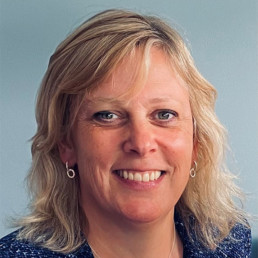
Written by Dr Jo Trevenna
Dr Jo Trevenna has over 20 years' experience of educational leadership from early years to post-graduate level. Her ongoing academic interests centre on Leadership and EEDI. Her company, Potential Education, offers leadership reviews, support and training and EEDI-focused school support.
There can’t be many of us still thinking that human identity is singular. Right? Aren’t we a combination of diverse characteristics that create and impact on our existence? Expectations and assumptions around combinations of characteristics are increasingly illuminated in societies, with light thrown on those who experience multiple discrimination and shade thrown on those who discriminate against those with different combinations of characteristics. The complexity around identity is foregrounded in explorations of intersectional discrimination. Yet intersectional disadvantage is not generally a focus for English schools.
Why?
Is it a lack of understanding and awareness or the lack of external accountability?
The Law
Critical awareness of the vulnerabilities faced by those with exact combinations of identity characteristics was first associated with the legal work of Kimberlé Crenshaw which looked into the discrimination experienced by African-American women in terms of ‘intersecting patterns of racism and sexism’ (Crenshaw 1991, p1243). Crenshaw asserted that anti-discrimination legislation in the United States did not actually protect African-American women because, when making legal claims against an employer, this particular group had to choose between a focus on either their race or gender, even though the discrimination they faced came at the ‘intersection’ of these two identity characteristics.
Section 14 of The Equality Act (2010) recognises the potential for discrimination pertaining to ‘combined discrimination: dual characteristics’ (Legislation.gov.uk 2010). The focus here is limited to direct discrimination against the combination of only two characteristics. More significantly, Section 14 has never, in fact, come into force. It just sits there in provisional status.
As it stands, therefore, the law does not adequately protect against intersectional discrimination and, in terms of English schools, there is no legal imperative to tackle intersectional discrimination.
Publicly Available Data
Published performance table data is hugely significant for schools. The first stage of the high profile ‘school and college performance measures’ website offers only a single-axis approach to pupil data. Some basic intersectional data is available on the ‘Explore Education Statistics’ section of the platform relating to ethnicity and disadvantage, disadvantage and gender, SEN and ethnicity. However, the data remains on cohort numbers and does not provide any information which may indicate the impact of those intersections on pupil academic performance, exclusions/suspensions and attendance. FOI requests can be made and the GOV.UK website also offers the facility for researchers through its new Grading and Admissions Data for England (GRADE) service. This service may be a significant step forward in terms of higher level transparency but it does not provide readily accessible data to the public on intersectional discrimination affecting pupils.
Data revealing the intersectional factors affecting pupils is available to school leaders and governors, local authorities and Ofsted via the ‘Analyse School Performance’ (ASP) secure access platform. Filtering mechanisms enable reports combining specific pupil characteristics, eg: boys with SEN, and scatterplot graphs make it relatively easy to identify patterns of underperformance because of key combinations of protected characteristics thereby highlighting potential impact of discrimination and flagging up need to address. Another school performance document is the Inspection Data Summary Report (IDSR), which is accessed on the secure ASP portal. The IDSR is a key document for Ofsted Inspectors when preparing to inspect a school and informs initial discussions with headteachers. Like the ASP tool, the IDSR does provide schools and Ofsted with a retrospective mini intersectional tool in its coding on scatterplots of the progress and attainment of pupils by binary gender classification and SEN status and deprivation status. However, there is no public access to this data.
To sum up: disadvantages experienced by pupils with specific combinations of identity characteristics in English schools are not readily flagged in publicly published school data. Perhaps Ofsted, which does have access to this anonymised intersectional data via the ASP and IDSR, has the potential to be the driving force in helping schools engage with intersectional discrimination.
Taking a sample of 68 Ofsted Section 5 inspection reports published in a six month period (not including those which inspected an already ‘Good’ school), there are only references to single-axis identity characteristics. In this sample, Ofsted, as the key inspection mechanism for schools, does not engage with the impact of intersectional discrimination on pupils. The lack of referencing in this sample of reports is not surprising given that Ofsted’s School Inspection Handbook only relates identity characteristics on a single-axis framework.
As it stands, then, there is no legal accountability, no easily accessible public data to enable transparent exploration of the impact on pupils and little Ofsted engagement with intersectional discrimination and disadvantage. Right now, without the external accountability structures, it is the choice of school leaders whether or not to adopt an intersectional approach to their schools. Given that most of us agree that identity has multiple components, it is surely time to explore how an intersectional approach can throw light on intersectional disadvantage and discrimination and therefore help schools to tackle it head on despite the lack of an external accountability framework.
On Disability #IDPwD2022
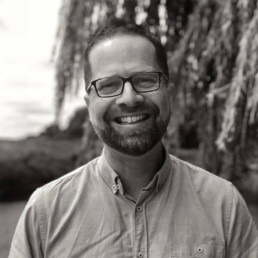
Written by Matthew Savage
Former international school Principal, proud father of two transgender adult children, Associate Consultant with LSC Education, and founder of #themonalisaeffect.
“My own heart let me more have pity on; let
Me live to my sad self hereafter kind,
Charitable…”
(Gerard Manley Hopkins)
In many ways, I have enjoyed my return to face-to-face consultancy, and to the buzz, warmth and joy of human interaction. However, I have also realised something else: on Zoom, I was not disabled. On Zoom, I could still walk and run, swim and cycle. On Zoom, I did not need my wheelchair, crutches or mobility scooter to move around. On Zoom, nobody would have known I was any different.
In recent months, I have been to restaurants with friends and colleagues, and I have developed an interesting habit. As soon as I am seated, I ask that my scooter and crutches are taken away out of my view and the view of others. I do the same when I am speaking to an audience too. Somehow, I seem to think that, if my disability is hidden from view, it will no longer exist.
When I first became ill, the talk was all of diagnosis and recovery. Medics were optimistic, and friends and family still asked that I “stay positive”. However, with time, the medics started to lose hope, and friends and family, not knowing what to say, chose, instead, to say nothing. It feels increasingly like my present has become my future, the two intertwined.
Although often relentless and ablaze, my pain is silent: mixing medication and mind muscle, I try to ensure that nobody knows. Similarly, I have managed to mask my encroaching stammer so far, although I know I will start to lose that battle soon. But people see my inability to walk before they see me; and, therefore, try as I might, it cannot be hidden.
This has presented me with a problem. As my disability becomes my body, I cannot be ashamed of one without being ashamed of the other too. Like many who have survived childhood trauma, I have a lot of shame, but I have realised that I cannot be ashamed of my disability. And that, as long as it is a guest in my house, I must welcome and embrace it as myself and, in so doing, love it too.
#DisabilityAwareness #DisabilityPride
The 3 Cs of DEIB Work: Consciousness, Confidence, Competence

Written by Hannah Wilson
Founder of Diverse Educators
Our Journey
When I am running training on DEIB (Diversity, Equity, Inclusion and Belonging) for different stakeholder groups, I suggest that they see this work as a journey. The DEIB journey is one we go on individually and collectively, personally and professionally. The journey is non-linear and quite messy – different people will go off on different routes to reach the same goal and people will get on and off at different stages. This journey is a marathon and not a sprint, so we need to pace ourselves and we need to sustain our commitment to the work.
Motivation to go on this journey is great, but it is the habits that we unlearn and relearn, that will enable the DEIB vision to become embedded into the provision. This is where we see impact and we can make change happen. Moreover, this journey has three parallel lanes. The 3Cs of Consciousness, Confidence and Competence are my way of breaking down the different things that we need to develop in ourselves and each other.
Our Consciousness
Def. the state of being aware of and responsive to one’s surroundings; a person’s awareness or perception of something.
We need to start here, fighting our bias for action as educators like to do and get busy finding solutions to problems. But we need to start with the being. We need to become aware of ourselves, of each other and of the environment in which we are existing.
Consciousness is about exploring our own identity, recognising our own bias and navigating our own power and privilege. We need to become conscious of what we have not experienced, of what we have not been exposed to, of who we do not know.
We talk about getting ‘comfortable with being uncomfortable’ because we need to do the ‘inner work’ before we can start the ‘outer work’. We need to start with understanding ourselves on a deeper level.
The call to action is to be able to look in the mirror and to understand who we are and what shapes our thinking/ behaviour.
Our Confidence
Def. the feeling or belief that one can have faith in or rely on someone or something; the telling of private matters or secrets with mutual trust.
With increased awareness, we recognise that we do not have all of the answers. So we need to get confident in acknowledging that we are not the expert and that we need to listen to and learn from others. As we grapple with new concepts and new language, we need to model that we are going to get it wrong, that we are going to need support and feedback, and that we will make mistakes, but we will learn from them.
Confidence is about getting curious and asking more questions. We need to listen to others, to their lived experience, in order to expand our own perspective. We need to have the confidence to discover some hard truths about our organisation.
As we become confident engaging with the subject matter, we then need to become more confident in what we say and what we do. We need to stand up and speak out on issues impacting our community, we need to call in and call out behaviour and language that is not inclusive.
The call to action is to be willing to be courageously open and vulnerable.
Our Competence
Def. the ability to do something successfully or efficiently; the quality or state of having sufficient knowledge, judgment, skill, or strength.
With consciousness and confidence, we can then start developing our competence. In order to do the work in realising our DEIB intentions and bringing our vision to life, we need to develop new skills.
‘We don’t know what we don’t know’ until we start the learning journey. By slowing things down we can be more intentional in identifying the gaps in knowledge and in planning the training to close these gaps over time.
Being competent means that we develop muscle memory, we practise until the new skills feel natural and automatic e.g. diversifying the curriculum/ library, reviewing policies/ processes and practices through a DEIB lens, holding courageous conversations, showing up as an ally.
The call to action is to invest time and resources into ongoing training for yourself and others.
Our Commitment
So as we head to the end of the year, we invite you to reflect on the journey you have been on with your DEIB work. Where have you become more conscious, more confident and more competent? And how have you cascaded this learning to others?
What does Remembrance Day mean to you?

Written by Rich Watts
Rich Watts is a qualified teacher with over 10 years’ experience in the classroom, he has an MA in Education from the University of Winchester. He has worked in several roles in schools, including Head of Faculty. Rich left the classroom in 2018 to head up the British Army Supporting Education (BASE) Programme.
When you think of Remembrance Day, what comes to mind? Traditionally, we associate it with wearing red poppies and The Cenotaph. In actuality, it means different things to different people.
So, for 2022 we have developed new, free resources that introduce students to the ways different groups commemorate Remembrance, highlighting diverse voices and experiences. The resources have been designed to encourage students to further explore the vital, unsung role of women as well as members of the LGBTQ+, Sikh and black communities.
The resources have been created for students aged 11-16 across all four nations. They present schools with a fresh and engaging approach to Remembrance Day. Students will learn what Remembrance is, why we come together to commemorate it and the diverse ways that we commemorate Remembrance. Individuals will also develop key skills and knowledge on the topics of similarities and differences.
This year’s resources have been designed to encourage students to think about the parades and memorials they will have seen – perhaps a theatre production too. Students will be encouraged to find out more about The Women of World War II Memorial. It remembers the seven million women who served, either in the armed forces or on the Home Front. And at the Imperial War Museum, visitors can see the Memorial to Black, Asian and Minority Ethnic (BAME) communities who lost their lives to conflicts in the name of Britain’s Empire and Commonwealth.
Students will be asked to think about the different varieties of poppies that are worn to mark Remembrance and their individual significance. Did you know that the Khadi poppy honours the contribution of Indian soldiers to Britain during World War I? And did you know that the purple poppy commemorates the animals that have been victims of war?
Students can further explore subjects touched upon in the Remembrance resources. They will learn about the remarkable contribution of diverse voices standing shoulder to shoulder with Army personnel past and present, including women and members of the black and LGBTQ+ communities. It also includes a Sikh Service pack produced in association with the Defense Network and historian, Gurinder Singh Mann. It allows students to understand the varied contributions of Sikh soldiers throughout the history of the British Army.
Julian James, a design technology teacher in Wales, said: “For too long, assemblies celebrating Remembrance Day have always followed the same outdated format. To mark this year’s poignant event, the British Army is providing schools with a fresh approach to presenting such important, historical information. Its resources feature music, thought-provoking images and stimulate questioning. The Army’s lesson resources are undoubtedly a new way of keeping the tradition of Remembrance Day going, while deepening students’ knowledge of its meaning and relevance to their lives.”
Teachers can download the Remembrance Day resources for free at: https://britishar.my/remembrance

